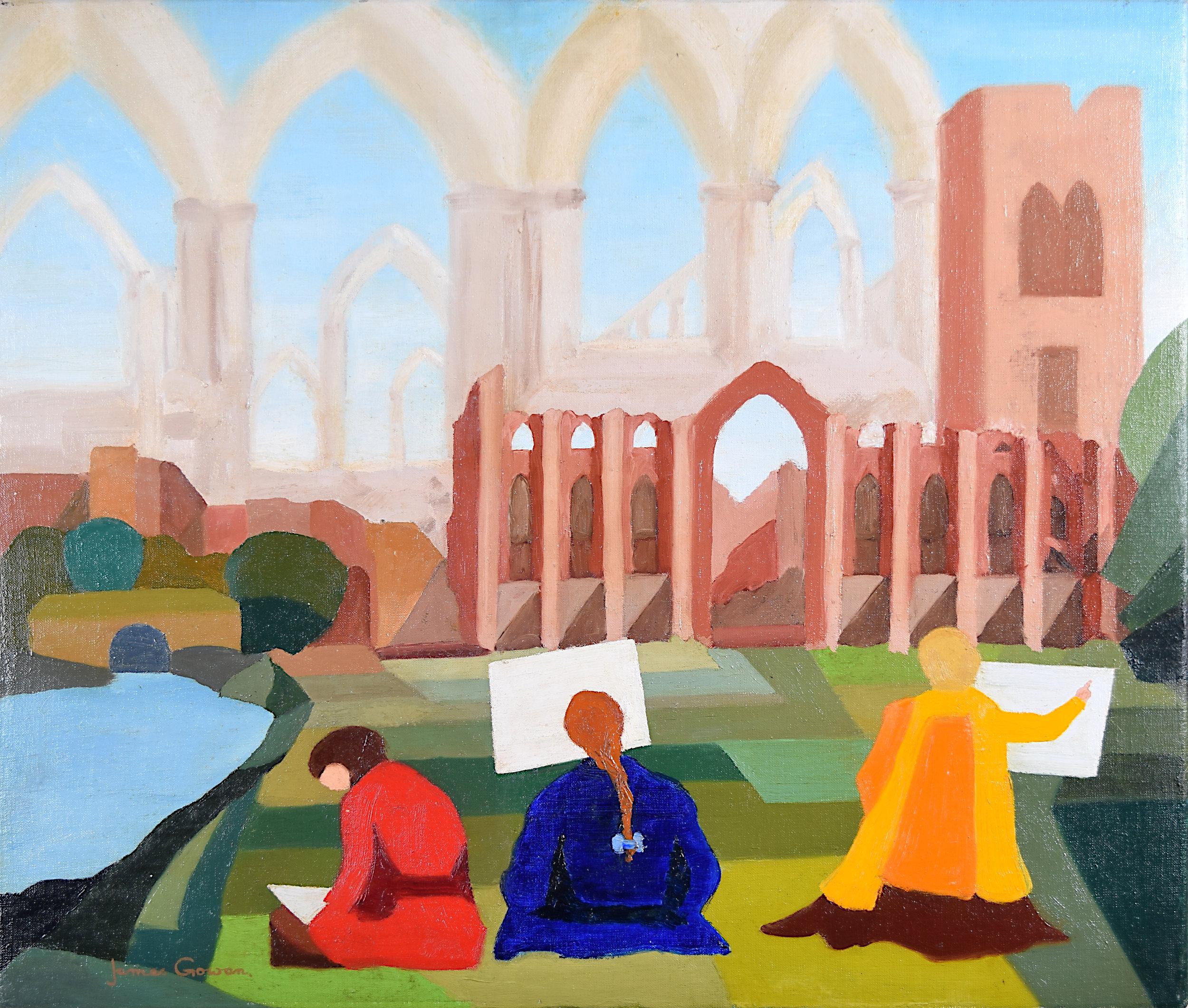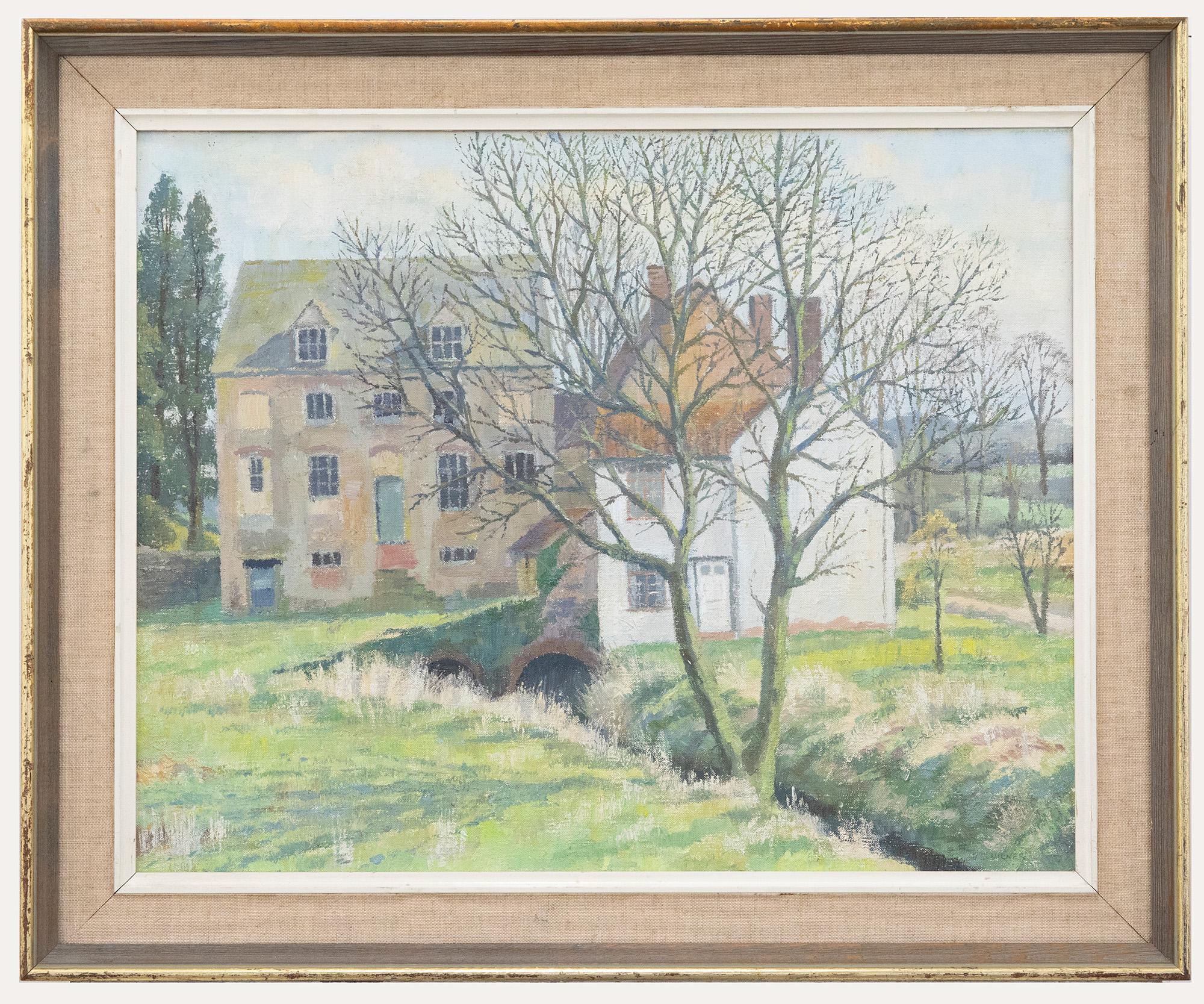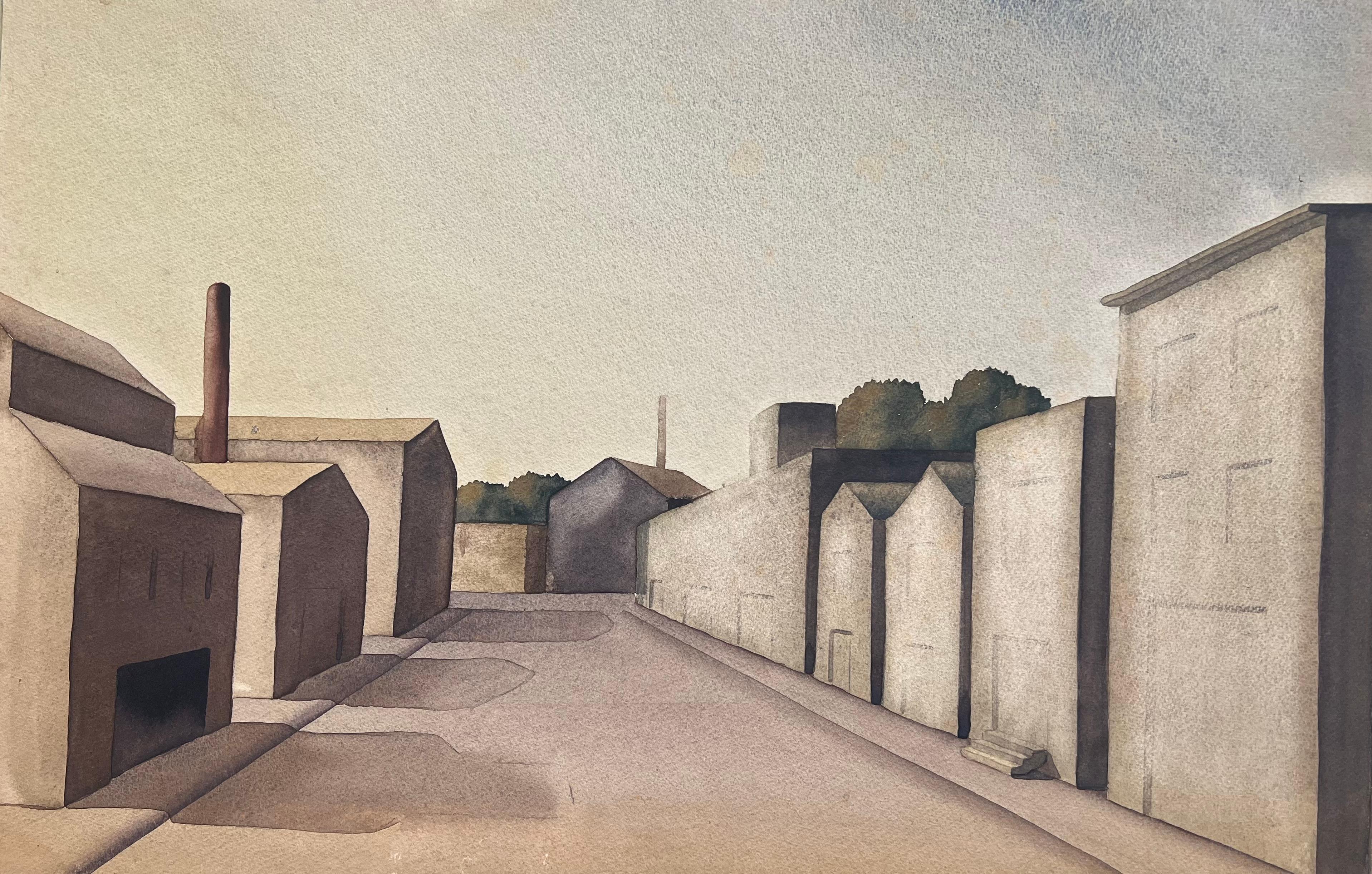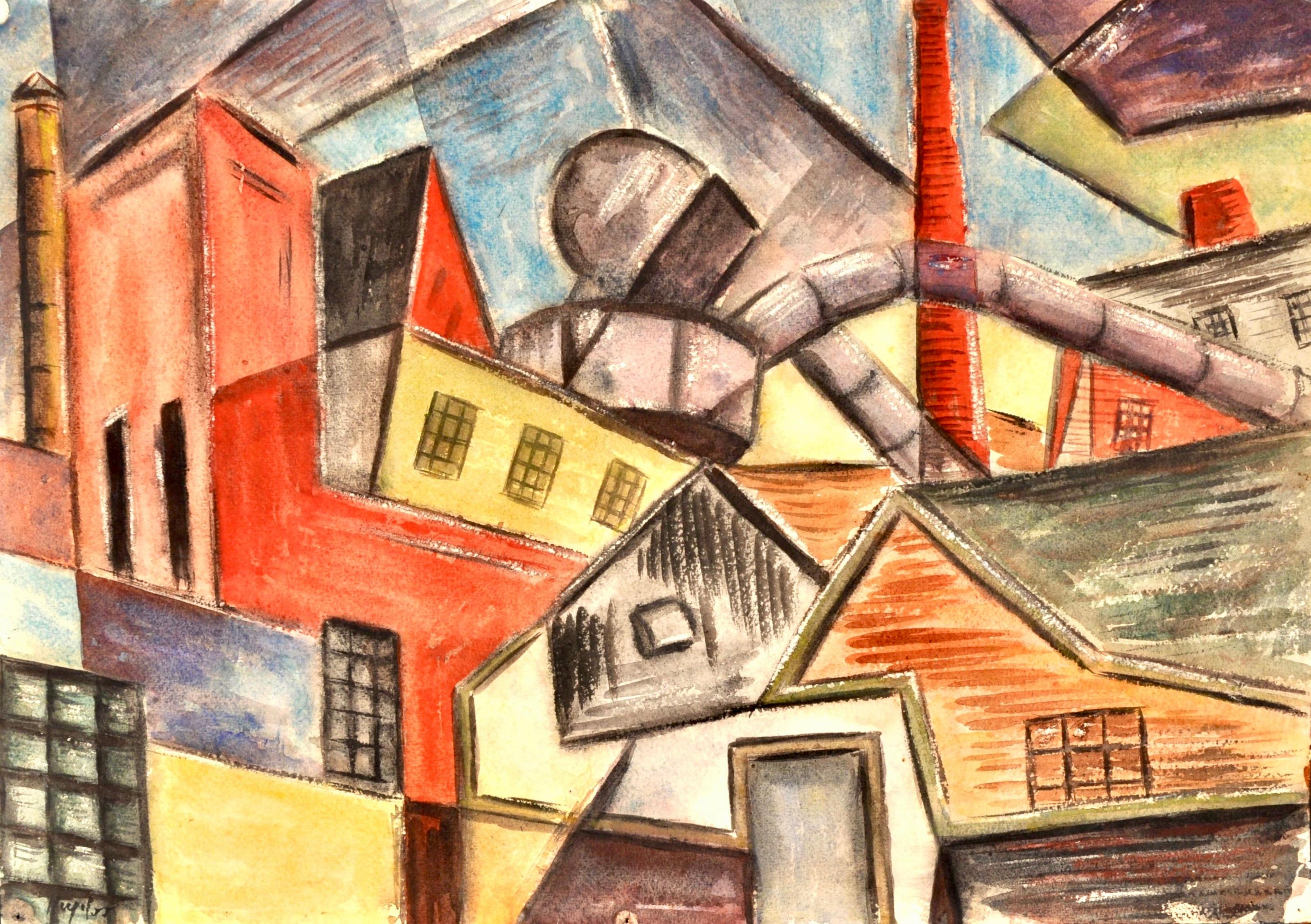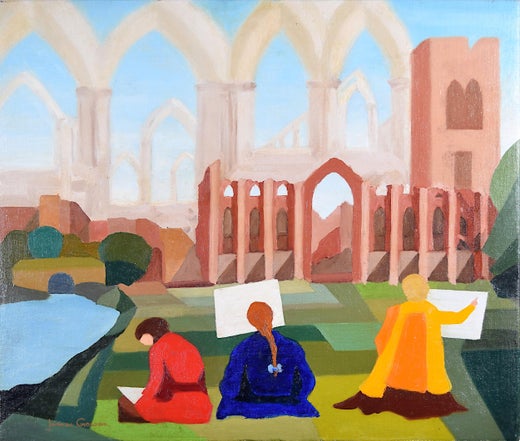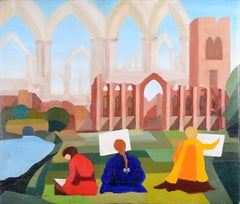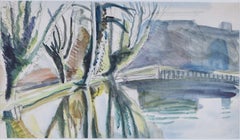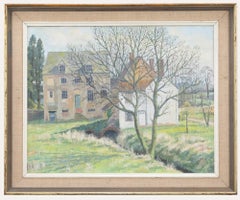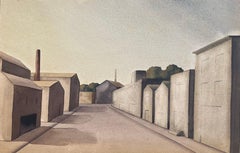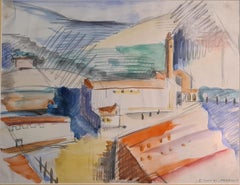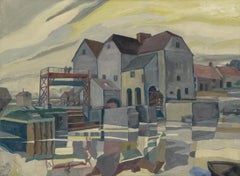James GowanJames Gowan FRIBA Blue Mill at Backbarrow Modernist Architect Leicester1973
1973
About the Item
- Creator:James Gowan (1923 - 2015)
- Creation Year:1973
- Dimensions:Height: 24.41 in (62 cm)Width: 20.48 in (52 cm)
- Medium:
- Movement & Style:
- Period:
- Condition:Generally excellent condition, relined.
- Gallery Location:London, GB
- Reference Number:1stDibs: LU79535134191
James Gowan
James Gowan studied at the Glasgow School of Art and Kingston School of Architecture where he was taught by Philip Powell of Powell & Moya, who subsequently employed him on the winning entry to the Skylon Competition for the Festival of Britain in 1951. Following a period working on Stevenage New Town, he joined Lyons Israel Ellis, where he met James Stirling. They were quickly established as one of the most radical practices of their generation when they designed Langham House Close on Ham Common (West London) in 1958 — a reaction against all that had gone before them. Gowan and Stirling took equal parts in the design of their early projects, culminating with the 1963 Engineering Building at the University of Leicester, considered the first postmodernist building in Britain. Shortly after the building was completed, the two split acrimoniously, Stirling taking the lion's share of the credit. The Engineering Building represented a massive shift from the postwar era's functionalist doctrines, bringing in forceful geometries and dynamic structural feats in what was subsequently called the 'engineering style'. Two cantilevered lecture theatres are topped by a pair of glazed towers, clad in red Dutch tiles, monolithic wedges inspired by the superstructure of an aircraft carrier; the workshop building is surmounted by a crystalline roof with rippling waves that let in north-facing light. An almost Gothic feel to the design, with concrete columns supporting the building like mediaeval flying buttresses, was later described by Gowan as "the Picasso profile with the big eye slapped on the front". The visually stunning and highly practical building caused the architects to be awarded the Reynolds Award from the American Institute of Architects and was Grade II* listed in 1993.
- ShippingRetrieving quote...Shipping from: London, United Kingdom
- Return Policy
More From This Seller
View AllMid-20th Century Modern Landscape Paintings
Oil
Mid-20th Century Modern Landscape Drawings and Watercolors
Watercolor
Mid-20th Century Realist Landscape Drawings and Watercolors
Watercolor
Mid-20th Century Impressionist Landscape Drawings and Watercolors
Watercolor, Pencil
1960s Impressionist Landscape Paintings
Canvas, Oil
1960s Modern Landscape Drawings and Watercolors
Watercolor
You May Also Like
20th Century Landscape Paintings
Oil
1940s American Modern Drawings and Watercolor Paintings
Watercolor, Board
Early 20th Century Art Deco Landscape Drawings and Watercolors
Paper, Watercolor, Gouache, Pencil
Mid-20th Century American Realist Landscape Paintings
Canvas, Paint, Oil
1930s American Realist Landscape Drawings and Watercolors
Paper, Watercolor
Mid-20th Century Modern Landscape Paintings
Oil
